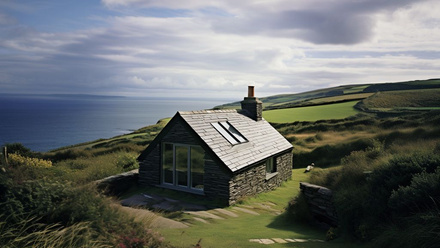Historic England launches online building stones database
It has been designed as a resource to help a wide range of professionals - from planners, designers, builders, surveyors, conservation advisors and developers - to homeowners and anyone with an interest in the geology and history of their local area.
Users can browse the geological map, search by postcode, address or place name as well as looking for a specific building stone, representative buildings or structures made with each stone type, and stone sources.
The database identifies important indigenous building stones, where they were extracted and potential sources for repairs and new construction.
Historic England has led the development of the new database, working with the British Geological Survey, local geologists, historic building experts, and volunteers.
Just under half the country's listed buildings (49%) are made from stone and it is a key material in many more. It also features heavily in conservation areas and historic high streets, as well as in thousands of unlisted buildings and structures.
Historic England says these buildings are potentially under threat, as suitable stone to repair them is often difficult to source.The database will help to pinpoint which stones come from specific quarries, empowering Mineral Planning Authorities to take steps to protect them.
They also say the new tool could also potentially cut the carbon footprint of repairs by identifying the closest sources of stone used in a building and thus reducing the need for long haul transport when replacing it.
The database is accompanied by a series of 45 highly illustrated regional guides covering different areas of the country.
Clara Willett, Senior Building Conservation Advisor at Historic England, said: "England's diverse geology has given rise to a huge variety of building stones, which in turn has helped shape our historic landscape – from cottages to grand castles, industrial mills to bridges.
"Before modern transport, buildings were constructed with locally available building stones, which commonly reflect the area's geology. This has helped create the character and distinctiveness of our towns, villages and rural landscapes.
"The need for a database was identified following research which revealed that - despite the importance of stone to England's historic environment - there was no comprehensive catalogue to help match stones used in a building to their source.
"Historic buildings are generally best repaired with the same type of stone used in their construction. Understanding the properties and performance of the original stone helps to determine the replacement. Like-for-like repair avoids further damage caused by incompatibility, as well as being important for a visual match."
For more information on the Building Stones Database for England, visit the technical guidance section on Historic England's website here.





